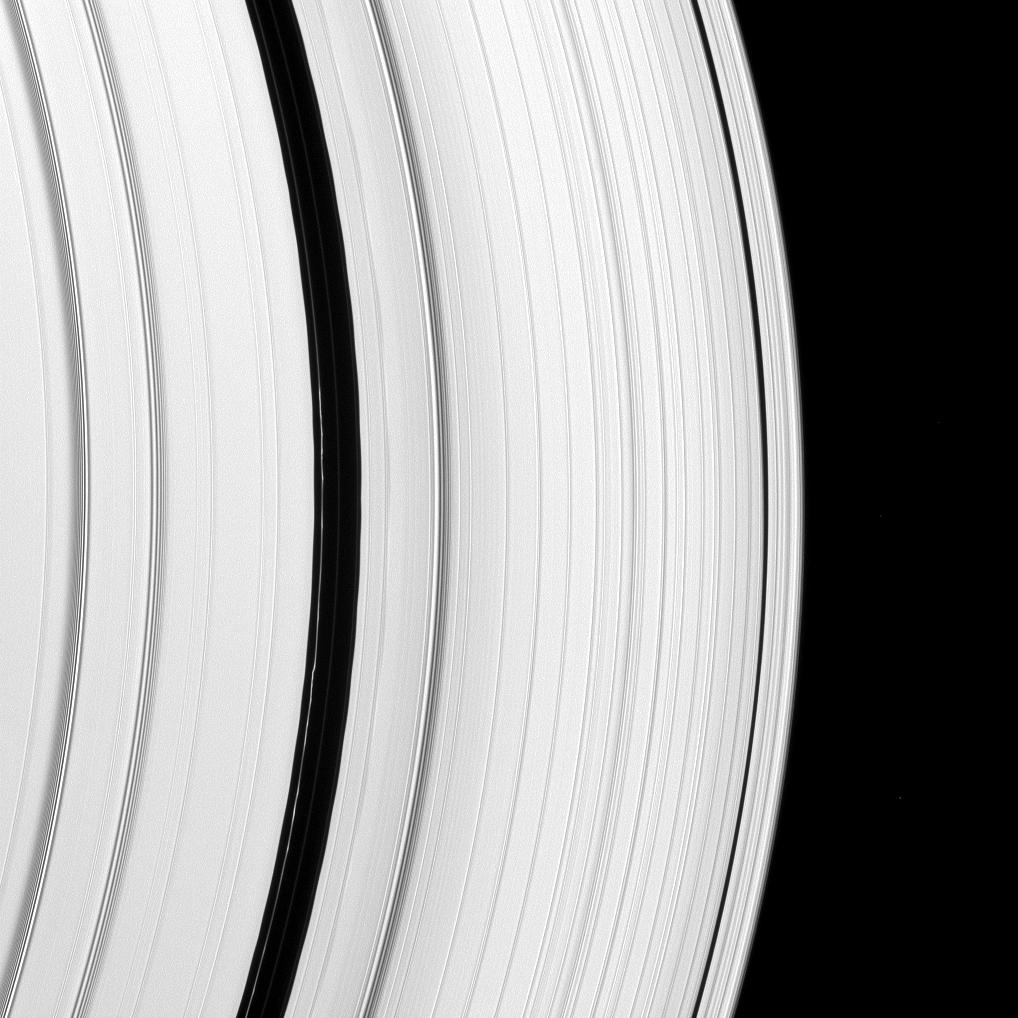God of Shepherds and Flocks

| PIA Number | PIA10574 |
|---|---|
| Language |
|
The Encke Gap moon, Pan, has left its mark on a scalloped ringlet of the Encke Gap. The moon creates these perturbations as it sweeps through the 325-kilometer (200-mile) gap in the A ring.
Three diffuse ringlets reside in the Encke Gap: the bright one on the left of the gap, a faint one in the middle and a very faint one on the right side of the gap where the A ring begins again.
This view looks toward the unilluminated side of the rings from about 17 degrees above the ringplane. The image was taken in green light with the Cassini spacecraft narrow-angle camera on Jan. 10, 2009. The view was acquired at a distance of approximately 1.1 million kilometers (680,000 miles) from Saturn and at a Sun-Saturn-spacecraft, or phase, angle of 28 degrees. Image scale is 7 kilometers (about 4 miles) per pixel.
The Cassini-Huygens mission is a cooperative project of NASA, the European Space Agency and the Italian Space Agency. The Jet Propulsion Laboratory, a division of the California Institute of Technology in Pasadena, manages the mission for NASA's Science Mission Directorate, Washington, D.C. The Cassini orbiter and its two onboard cameras were designed, developed and assembled at JPL. The imaging operations center is based at the Space Science Institute in Boulder, Colo.
For more information about the Cassini-Huygens mission visit http://saturn.jpl.nasa.gov . The Cassini imaging team homepage is at http://ciclops.org .
Credit: NASA/JPL/Space Science Institute
